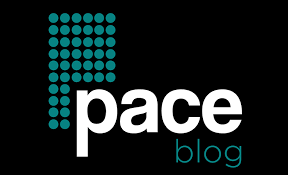Micromanagement perceived as a necessary evil, is a strategy many conservative managers use to stay on track with employees’ productivity and performance. At the heart of micromanagement is a lack of trust therefore, this harmful strategy can backfire making employees stressed, anxious, and less productive because of excessive control. This stress and anxiety can lead to disengagement and burnout driving employees to seek a more supportive and trustful work environment and increasing the company’s turnover rates.
The good news is that advanced technology, specifically remote monitoring software, can help bridge this trust gap. These tools can foster a more trusting and collaborative work environment by providing transparency and objective performance data.

Trust Issues in Micromanagement
When managers don’t trust their employees are putting enough effort into their tasks and workflow they start controlling their every move. This extreme lack of trust will suffocate employees’ autonomy and motivation for work, ruining their overall performance, and creating a toxic work environment. All of this will most likely have devastating consequences for your business’s success and brand image.
For this reason, abandoning micromanagement and finding more transparent and unintrusive ways to track employee performance, especially if you’re running remote teams should be your top priority
Perceptions of Excessive Control
In the eyes of employees, micromanagement equals a lack of trust, making them feel underappreciated and stressed. The working atmosphere of excessive control will diminish employee motivation leading to disengagement and even burnout, affecting their productivity and mental health. This constant pressure can hinder creativity and innovation, causing employees to hold back rather than take initiative.
Rebuilding Trust with Remote Monitoring Software:
Remote monitoring software can be a game-changer in rebuilding trust between managers and employees. These tools offer transparency by real-time tracking of work progress and performance metrics. Managers can use this insightful information to create constructive feedback and support. Employees, on the other hand, can access their track records and gain invaluable insight into their performance and productivity fluctuation on daily basis.
Strategies for Using Remote Monitoring Software Effectively:
- Transparent Communication:
- Introduce remote monitoring software as a tool for support, not surveillance. Explain how it will be used to help employees improve and succeed.
- Transparency about the data collected and how it will be used can alleviate fears and build trust.
- Focus on Outcomes, Not Processes:
- Shift the focus from how tasks are completed to the results achieved. This approach shows trust in employees’ abilities to manage their workflows.
- Allow employees to have autonomy in how they complete tasks, fostering a sense of ownership and responsibility.
- Provide Constructive Feedback:
- Use the data from remote monitoring software to offer specific, actionable feedback. This helps employees understand their strengths and areas for improvement.
- Regular feedback sessions can build a culture of continuous improvement and mutual trust.
- Encourage Open Dialogue:
- Create an environment where employees feel comfortable discussing their concerns about remote monitoring. Address any issues promptly and empathetically.
- Encourage employees to share their insights and suggestions for using the software more effectively.
- Celebrate Achievements:
- Use the objective data from the software to recognize and celebrate employees’ achievements. Public recognition can boost morale and reinforce trust.
- Highlighting successes shows employees that their efforts are noticed and appreciated, strengthening their commitment to the organization.

Conclusion
Micromanagement is a harmful and outdated business practice that reflects your lack of trust in your employees’ efficiency and skills. Abandoning micromanagement and deploying advanced tools like remote monitoring software may help you rebuild the trust essential for your business success.
By using tracking data transparently and ethically you’ll gain real-time insight into employees’ activities, without having to hover over their heads. Matching these track records with effective strategies such as transparent communication, focusing on outcomes, providing constructive feedback, encouraging open dialogue, and celebrating achievements can reinvent your toxic micromanaging environment into a thriving and supportive one.

